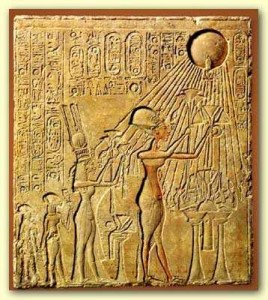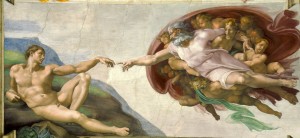In the previous section on the Dantean Cosmos we saw that in considering the Afterlife, it was necessary for Dante to examine the Whole World as he knew it. This gave him widest berth possible in his masterwork, The Divine Comedy. When I consider all of the ramifications, I find it impossible to fully comprehend my own demise. This may be slightly unusual but is by no means unique. Though most people profess to have no problem contemplating their own death, one gets the distinct impression that there are also many others, such as myself, who are unable to fully comprehend a total cessation of consciousness. Indeed I have found in so many things, I am not so far from the mainstream. The young carry a mistaken idea of their all fired uniqueness, but those of us who have been around for a while, find their own ideas have been expressed and far more eloquently, so many times. Dante was brilliant in the extreme, but he was not unique in the aspect of exploration of the Afterlife and in finding in exploring that topic, incorporating a sort of Theory of Everything (TOE) encompassing all that is known. The Egyptians discovered the same, only their tools of exploration were more basic than Dante’s.
Egyptian pharaohs built the largest edifices to immortality in the history of mankind, in the process, harnessing the full power of big government, enslaving tens of thousands. To many the pyramids are nothing more than government mega-projects. To others, myself included, they have been a lifelong source of wonder. We might never have had appreciation of this marvelous civilization, spanning thousands of years, if not for the enormity of their federal enterprise. It is not clear whether these monuments were meant to prevent the demise of a certain class of important personages or as a statement made to all, even to us in posterity, that death is not the end of human existence but a transition between worlds. Egyptian texts and monuments, whether or not they are ill-begotten gains, do speak to us now.
Egypt was one of the first successful agricultural civilizations able to produce food sustenance in enough excess to allow for human specialization, profusion of knowledge , writing, government and social class. Inherent in this was a diversity wealth and social status. As soon as Egypt was able to divert any effort away from bare subsistence it is most remarkable that they seem to have chosen to focus on creating enormous public works devoted to death, most widely recognized in the elaborate rituals of mummification, tombs, sarcophagi, and pyramids. This may seem to us to be rather absurd but from one perspective, life here on earth is finite while life after death lasts forever, a point that seems not to have been lost to our friend Dante and many others. The greatest of the Pharaohs, household names certainly include Ramesses II, were conquerers and particularly in the region of Canaan and Syria which brought increasing tributes and wealth and of course, they did oppress their own people.
Stunningly Egypt was a great power for well over 4000 years, a longer period than any other empire, so that over that time their theosophical views underwent both revolutionary and evolutionary change impossible to summarize or even know completely. They tended to represent many of their gods as being part human and part animal Cheops chimeras. gods which were a throwback to animism. Gods tend to have their own priestly and royal constituencies as in most cultures slowly accumulating over history.
Egypt did have a famously brief encounter with a possible forerunner of monotheism championed by Akhenaten who ruled in the 18th dynasty about 1350 BCE. Aten the chief and eventually for a time the only god, was the disc of the sun whose rays stream down upon earthly denizens their palms outstretched to receive them as if accepting a gift of life. (There are wonderful stone carvings, renderings of phalanxes of shapely women (who represent life?), their hands stretched to receive life-giving Aten’s rays, like leaves of trees, just the same as the Deity reaching for Adam’s hand in the Sistine chapel). Akhenaten was sometimes rendered artistically in feminine form with slight chest and rounded abdomen eschewing the traditional muscular representations of the Pharaoh. Even so he was dictatorial, jealously extirpating any reference to all gods other than the Aten sun disc. The royal family took upon themselves communing their deity, eliminating any referent to an imminent god who might directly connect with ordinary people. This monomania was to prove unpopular. At Akhenaten’s death, Nefertiti his attractive wife, may have taken power for a time and interestingly is also represented in a sexually ambivalent manner. Akhenaten’s son Tutankhamen married his half sister and likely under pressure from priests and nobility invested in ancient gods, reverted to the previous pantheon. Siigmund Freud made much of this in his Moses and Monotheism, maintaining the monotheism was invented in Egypt. Perhaps he was right.
Elaborate rituals of mummification developed primarily to preserve the physical body which was thought to be a necessity in the afterlife. Egypt was a highly advanced society that had hieroglyphic and post-pictorgraphic forms of writing and concepts of body and soul were eventually well developed as expressed in so called pyramid and coffin texts and the famous Book of the Dead. Early humans had to have noticed how their remains decay rapidly to nothing, which emphasizes that all life ultimately comes to nought. Ancient Egyptians had conceptions of the soul, as Ka, Ba, Akh that along with one’s name and shadow might be reunified with the body for life in the afterworld. Processing of human remains was to develop slowly but eventually an elaborate mummification ritual was to last approximately 70 days. The purpose was to preserve the body in closest to living form. Solid organs were removed and placed in canonic jars. The brain was alone in being simply removed and thrown out, the brain’s function of experience and memory being ascribed to the heart which among solid organs, was uniquely left inside the body. The physical body had to dehydrated with natron sodium carbonate/bicarbonate and converted to a mummy familiar to all of us. 70 days was thought to reflect the time when the dog star the brightest star in the sky, Sirius, is invisible in sunlight which reappears with the flooding of the life-giving Nile river.
The Egyptian cosmos centered on the rising and setting of sun, Re. Connecting the rising of the sun with birth in the east and the sun’s setting with death, associated with the god Osirus in the west, seems only natural. At death one hoped to be first a member of the elect class felt worthy of an afterlife. If so you might be able to hitch a ride with Osirus and into the dark after world of the setting sun, perhaps ferried up by a bird or a barque or some other conveyance You might very luckily be with the northern stars that never set over the horizon..The sunrise and sunset over the Nile had to be the center of Egypt’s universe but like all ancient non- light polluted peoples they had to appreciate the splendor and beauty of the night sky as modern humans almost never do.
Egyptians didn’t worry about eternal torment of hell. But their afterlife was reserved for an elect few. Death was a struggle. Famously your heart was placed on a giant balance weighed against the feather of Maat, goddess of truth and justice, before Osiris, Anubis, the jacket-headed funerary god and other witnesses. Should your heart be freighted with misdeeds, having failed this test, it would immediately be devoured by Ammit, half lion half hippo gobbler. Gone were your chances inheriting the world to come. Even if you passed this test with each rising and setting of the sun, there were other hazards, the beasts and snakes that menace the dead in the skies.
One might thus conclude that to the Egyptian, the next world is quite similar to this one. There was a pleasant field of Hetep = satisfaction in the west where you might hope to spend eternity. Living one’s life without ever having to look back and measure the results is unsatisfactory. Should the purest saint have the same dark end as an evil mass murderer? It seems to me the difference in the Dantean judgement as opposed to the Egyptian one, is that at least for the Egyptians the person is placed on a balance which seems more rational than in Dante where humans are judged, particularly in the Inferno, according to the worst of their deeds or even worse, their thoughts, with no chance to balance the bad with the good. It seems intrinsic to Christianity that the Deity, examining our lives, should not think twice about condemning us as described by our own American Jonathan Edwards where each of us hangs by a thin spidery thread over hellfire. The reason why some elect unnumbered relatively few are not condemned is only by the grace of God.
Also in Egypt we have an insistence of physicality, corporality, even in the Afterlife. Dante does admit to the torments of the flesh so that corporeality is not completely thrown away, yet there seems less than a complete bodily self in the “shades” of the Inferno. Noting the speed of decomposition of the human corpse perhaps most logical persons would come the conclusion that the body is inconsequential but not for the Egyptians who spared nothing in the preservation of the human form. Having removed the solid organs and the brain, Egyptians must have had the idea of putting Humpty Dumpty back together again. In the Book of the Dead, there are incantations some notion of the soul but the stress is on preservation of the body. Egyptian tombs, the best example was the tomb of Tutankhamen, were rich in the personal earthly effects and vast treasures of the principal inhabitant. Certainly these tombs contained a mixture of physical and non physical. There is a ceremony for opening the mouth of the deceased presumably to work for his defense in the after world and coffins and tombs were lined with words and incantations. Coffins were supplied with painted eyes to detect the animals that menace the deceased in the heavens.
It seems to me that those who prepared the newly dead for the afterworld and spent so long on the process of mummification, had to be aware, that in the final analysis they never moved or went anywhere but stayed exactly wherever they were placed. As with so many things, those persons in the know were aware of what a subterfuge it all was. The physical body is and will remain lifeless. This is not unlike the business in the modern world of freezing human remains in liquid nitrogen, hoping against hope to be awakened at some future time.
Akhenaten (and royal family) in female form receiving life from the sun disc. On the right Michelangelo’s iconic rendering of Adam being given life from the Sistine Chapel. The sublime idea a life giving Deity is the same, only for the Egyptians, the Host was with the Pharaoh.
Images are courtesy of Wikimedia

